
Julia Carolyn Child was an American chef, author, and television personality. She is recognized for having brought French cuisine to the American public with her debut cookbook, Mastering the Art of French Cooking, and her subsequent television programs, the most notable of which was The French Chef, which premiered in 1963.

Simone "Simca" Beck was a French cookbook writer and cooking teacher who, along with colleagues Julia Child and Louisette Bertholle, played a significant role in the introduction of French cooking technique and recipes into American kitchens.

Coq au vin is a French dish of chicken braised with wine, lardons, mushrooms, and optionally garlic. A red Burgundy wine is typically used, though many regions of France make variants using local wines, such as coq au vin jaune (Jura), coq au riesling (Alsace), coq au pourpre or coq au violet, and coq au Champagne.
Dione Lucas was an English chef, and the first female graduate of Le Cordon Bleu. Her father was the architect, jeweller and designer Henry Wilson, and her sister was the violinist Orrea Pernel (1906–1993). She married another architect, Colin Lucas (1906–1984).
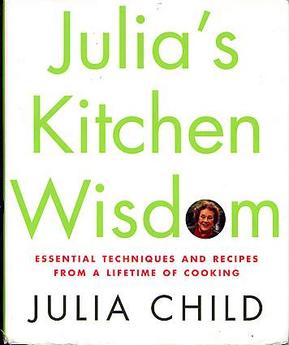
Julia's Kitchen Wisdom is the final cookbook authored by chef and television personality Julia Child. Co-authored by David Nussbaum and edited by Judith Jones, the book covers basic cooking principles and techniques and was designed to serve as a reference point for amateur cooks. Julia's Kitchen Wisdom was the 17th book written by Child and gained widespread popularity following the release of the 2009 film, 'Julie and Julia'.

French onion soup is a soup of onions, gently fried and then cooked in meat stock or water, usually served gratinéed with croutons or a larger piece of bread covered with cheese floating on top. Onion soups were known in France since medieval times, but the version now familiar dates from the mid-19th century.
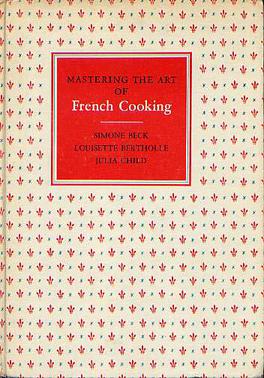
Mastering the Art of French Cooking is a two-volume French cookbook written by Simone Beck and Louisette Bertholle, both from France, and Julia Child, from the United States. The book was written for the American market and published by Knopf in 1961 and 1970.

Beef bourguignon or bœuf bourguignon, also called beef Burgundy, and bœuf à la Bourguignonne, is a French beef stew braised in red wine, often red Burgundy, and beef stock, typically flavored with carrots, onions, garlic, and a bouquet garni, and garnished with pearl onions, mushrooms. A similar dish using a piece of braised beef with the same garnish is pièce de bœuf à la bourguignonne.

Salade niçoise is a salad that originated in the French city of Nice. It is traditionally made of tomatoes, hard-boiled eggs, Niçoise olives and anchovies or tuna, dressed with olive oil, or in some historical versions, a vinaigrette. It has been popular worldwide since the early 20th century, and has been prepared and discussed by many chefs. Delia Smith called it "one of the best combinations of salad ingredients ever invented" and Gordon Ramsay said that "it must be the finest summer salad of all".
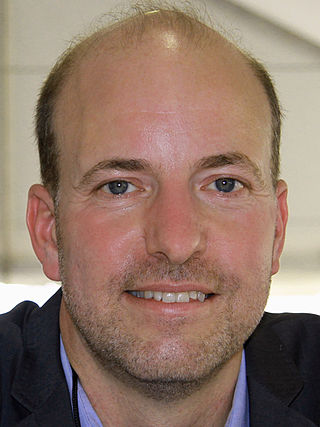
Alex Prud’homme is an American journalist and the author of several non-fiction books.

Julie & Julia is a 2009 American biographical comedy drama film written and directed by Nora Ephron starring Meryl Streep and Amy Adams in the title roles with Stanley Tucci, Chris Messina, and Linda Emond in supporting roles. The film contrasts the life of chef Julia Child in the early years of her culinary career with the life of young New Yorker Julie Powell, who aspires to cook all 524 recipes in Child's cookbook in 365 days, a challenge she described on her popular blog, which made her a published author.

The Way to Cook is a series of six instructional videos about cooking produced in 1985 and a companion cookbook published in 1989, both featuring the television personality and cooking teacher Julia Child.

Irena Chalmers-Taylor was an author and food commentator/essayist, teacher and culinary mentor. Named "the culinary oracle of 100 cookbooks" by noted American restaurant critic and journalist, Gael Greene, Chalmers was recognized as the pioneer of the single subject cookbook. Her life story revealed an unlikely journey to becoming a James Beard Foundation "Who's Who" of Food and Beverage in America 1988 Award Recipient.
Élisabeth Brassart (1897–1992) was the proprietor of the Le Cordon Bleu school in Paris from 1945 to 1984. Le Cordon Bleu had been founded in 1895 by Marthe Distel and Henri-Paul Pellaprat.
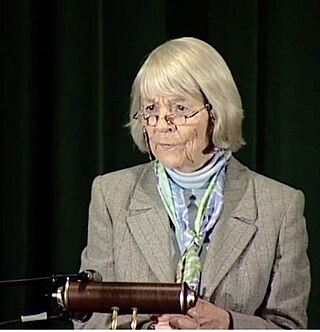
Judith Jones was an American writer and editor, best known for having rescued The Diary of Anne Frank from the reject pile. Jones also championed Julia Child's Mastering the Art of French Cooking. She retired as senior editor and vice president at Alfred A. Knopf in 2011 and fully retired in 2013 after more than 60 years at the company.
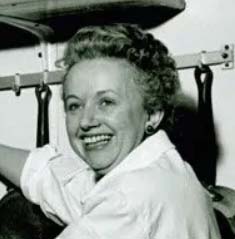
Louisette Bertholle was a French cooking teacher and writer, best known as one of the three authors of the bestselling cookbook Mastering the Art of French Cooking.
Paul Cushing Child was an American civil servant, diplomat, and artist known for being the husband of celebrity chef and author Julia Child.

Barbara Ketcham Wheaton is an American writer and food historian. Since 1990, she has been honorary curator of the culinary collection at the Schlesinger Library, Radcliffe College, one of the largest collections in the United States of books and manuscripts relating to cooking and the social history of food.
Madeleine Kamman was a French chef and restaurateur, cookery teacher and author of seven cookbooks, who spent most of her working life in America bringing the rigors of French technique to American ingredients and audiences.
In French gastronomy, cuisine bourgeoise is the home cooking of middle class families as distinguished from elaborate restaurant cooking, haute cuisine, and from the cooking of the regions, the peasantry, and the urban poor.














